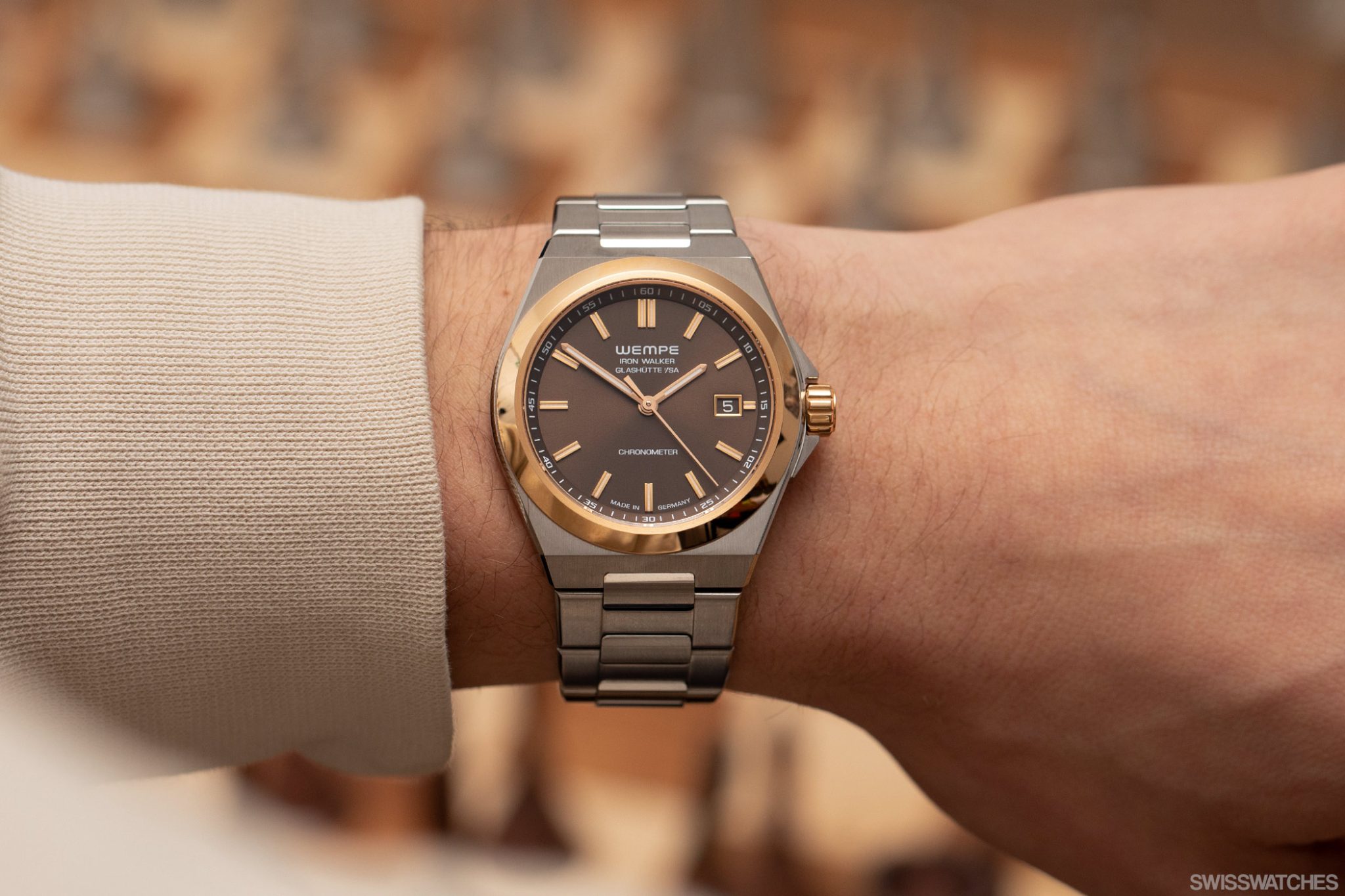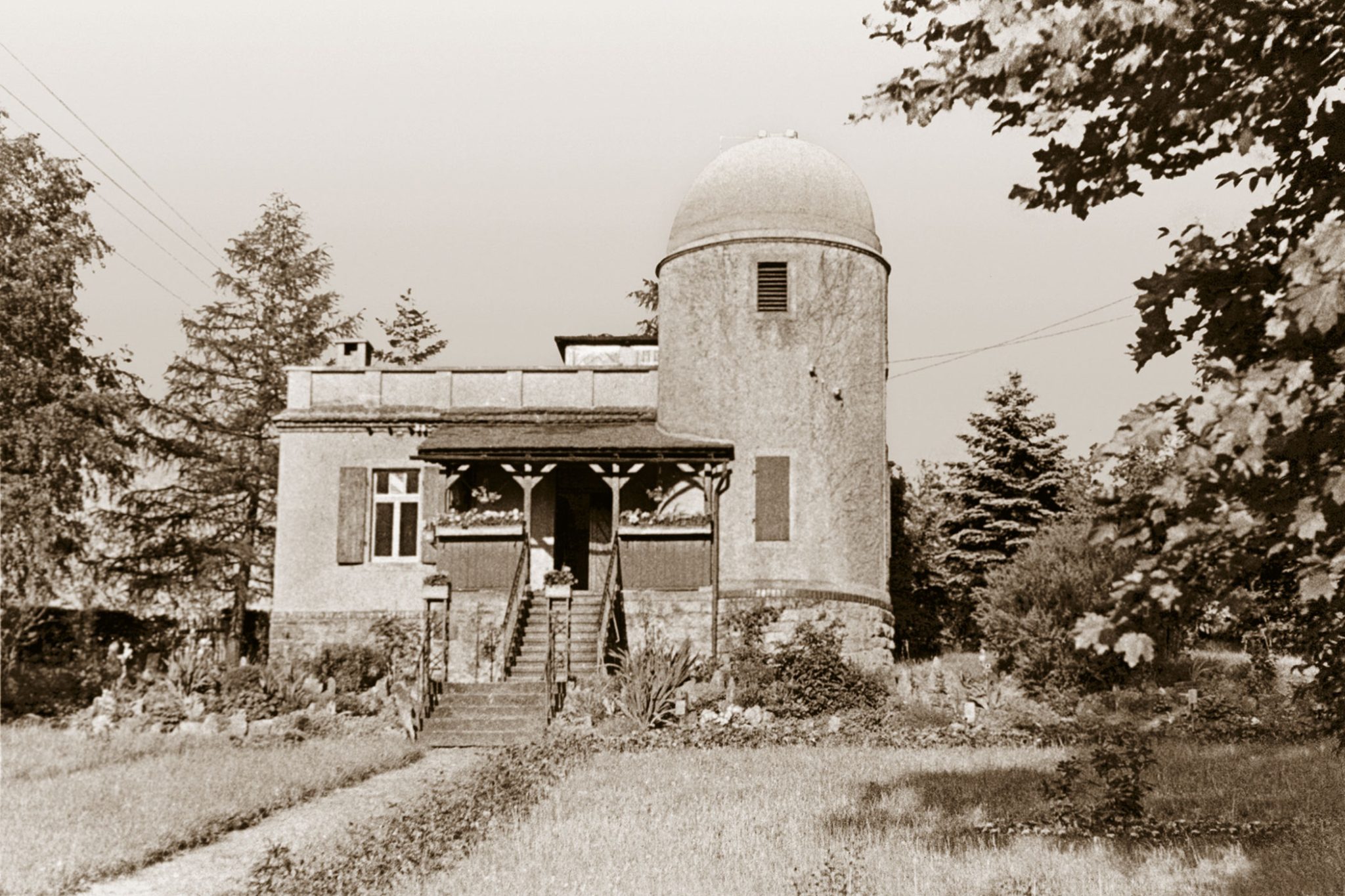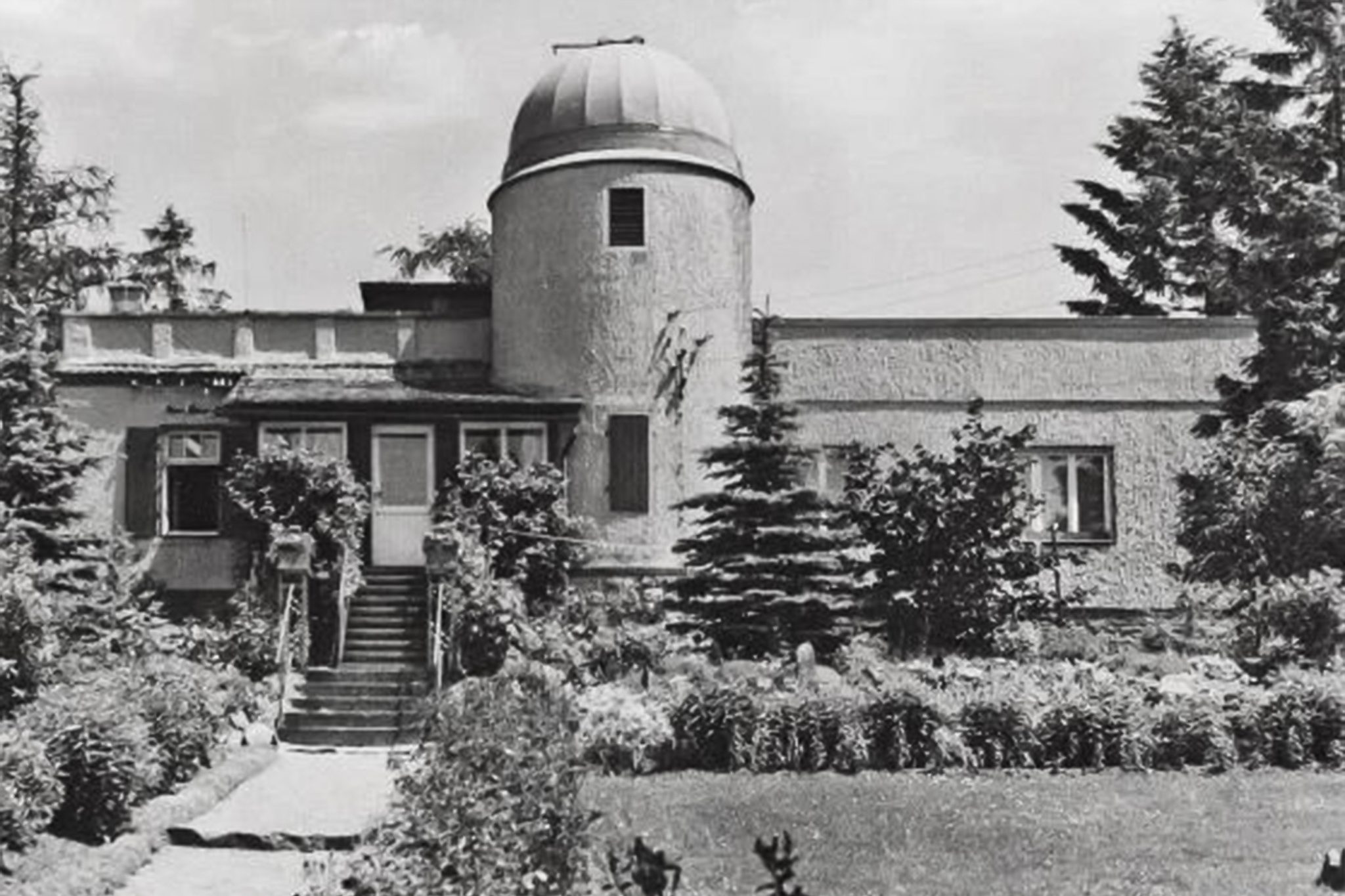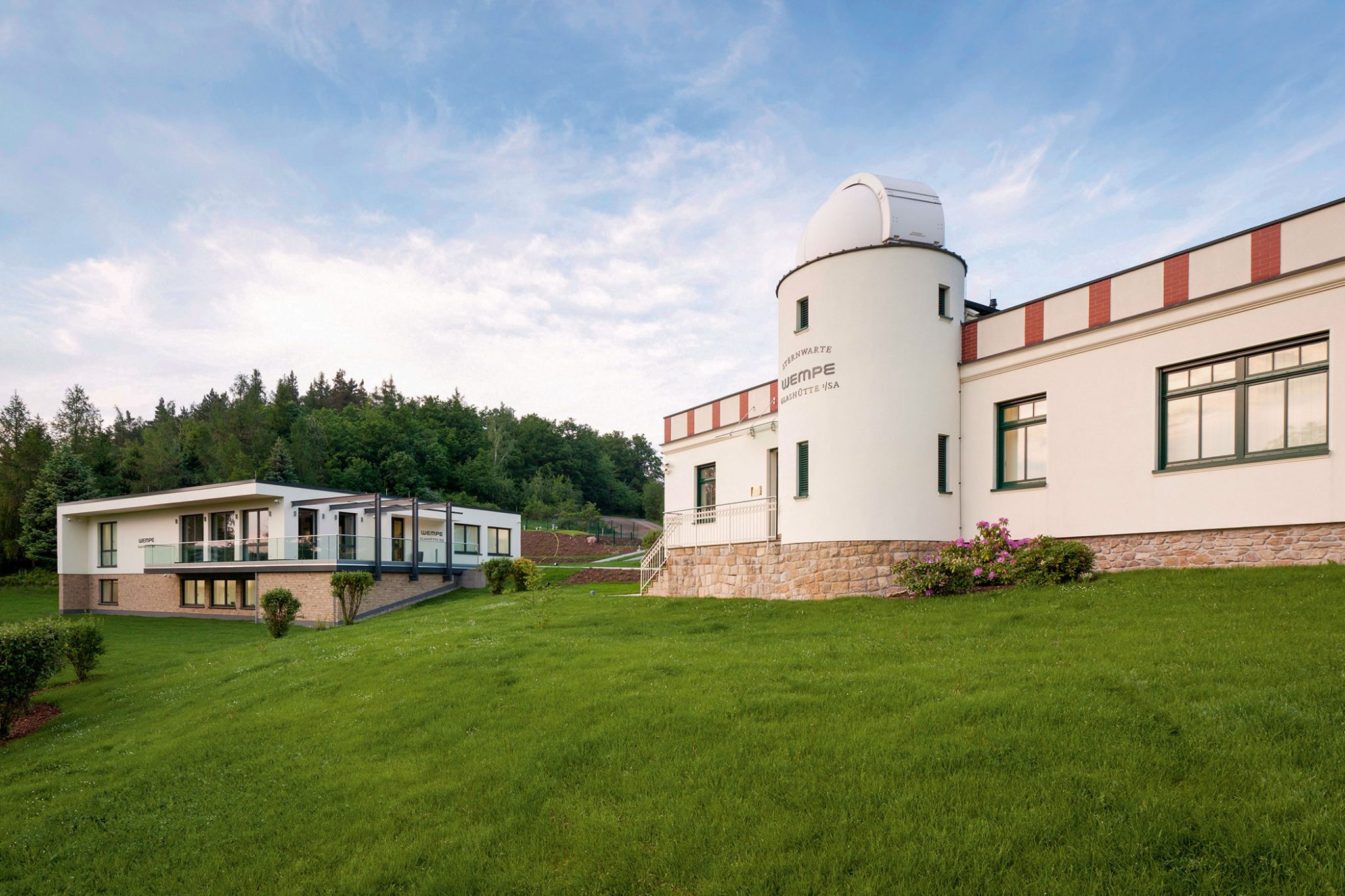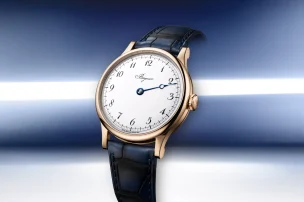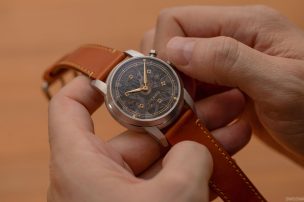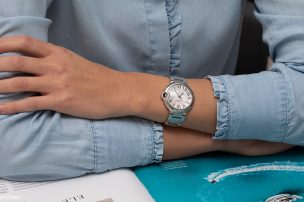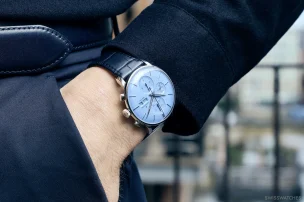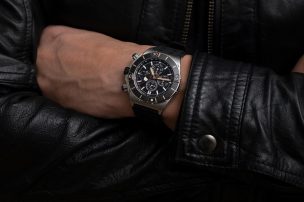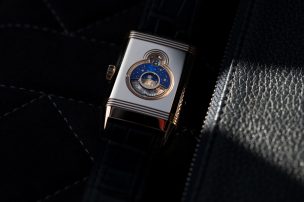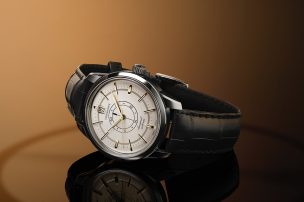
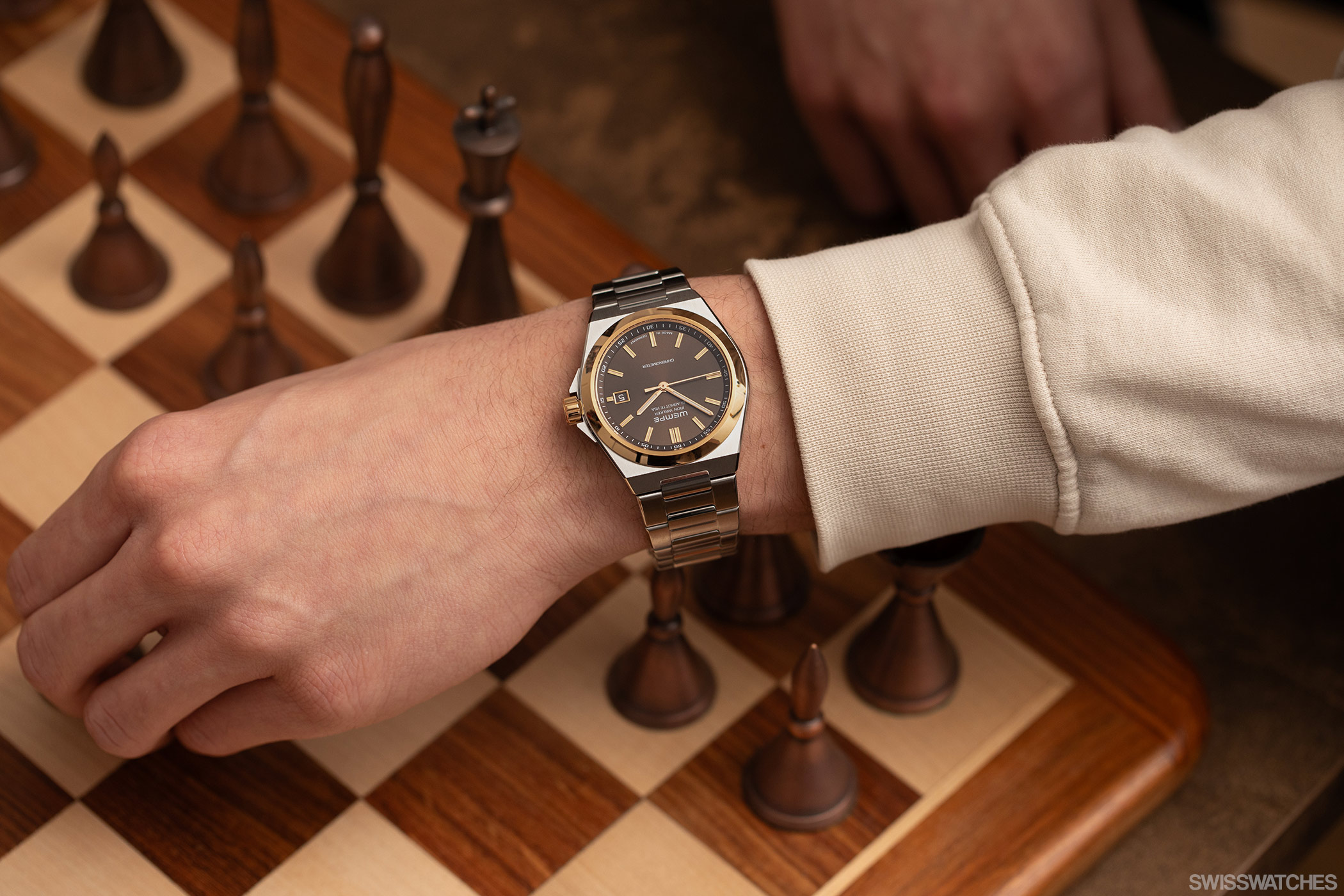
The Wempe Iron Walker Bicolor Proves How Stylish Two-tone Can Be
With 35 international branches and around 800 employees, luxury watch and jewellery retailer Wempe is one of the largest of its kind. Given its size, it’s no surprise that the retailer also sells its own creations in order to save on margins, so to speak. But without a coherent story, business for Wempe would probably be difficult. Fortunately, Wempe can lay claim to an impressive history in the field of watchmaking, and has long made a decisive contribution to the manufacture of watches in Germany. Today, the retailer offers three watch collections under the Wempe Glashütte I/SA brand, of which the Iron Walker, launched in 2020, plays the role of serving the market’s appetite for steel watches with integrated bracelets. When Wempe presented four models of the Iron Walker Automatic Bicolor in May last year, my interest was aroused. After all, aren’t bicolor watches considered less desirable than their steel counterparts these days, and perhaps even regarded as old-fashioned? I resolved to do a deep dive into exactly how Wempe implements the concept of the bicolor watch and, above all, take a look at the venerable watchmaking history that Wempe has to share.
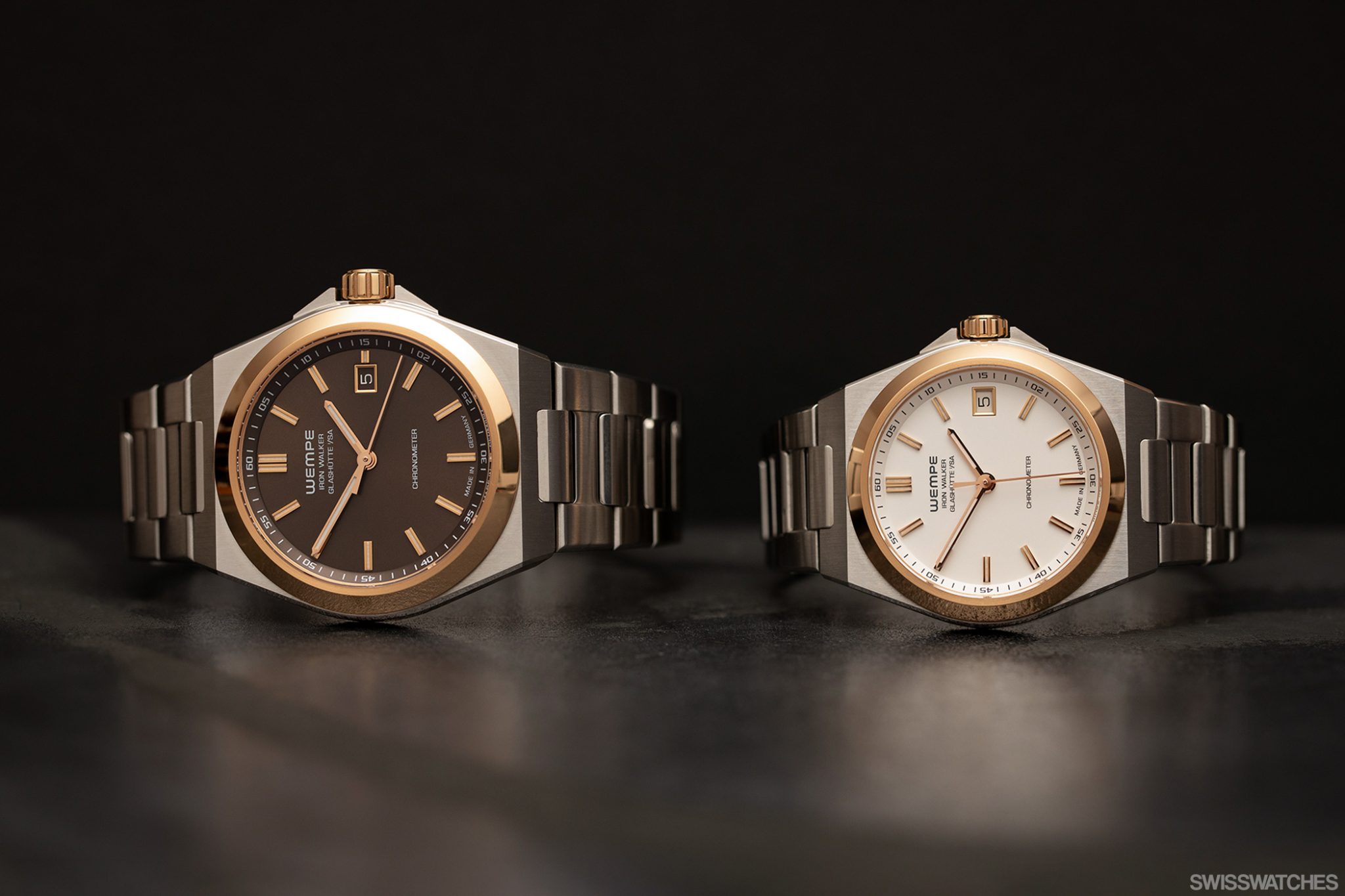
The birth of Wempe’s watch production facility
The tale of Wempe’s watch production is a German story, and what enables its continued production goes far back to a time when the watch industry in Glashütte, founded by Ferdinand Adolph Lange in 1845, needed a clear-cut reference time. Initially, it was sufficient to transmit the reference time entered manually by the National Metrology Institute in Berlin to the watchmaking school and surrounding manufactures in Glashütte using a Morse code. However, it soon became clear that this method of transmission, and the associated inaccuracy of the time signal, no longer met the precision requirements of Glashütte watches. Around 1905, the local watchmakers’ association, ‘Urania’, realised that Glashütte needed its own time signal, and thus its own observatory with telescope. Prof. Foerster wrote in a letter to the chairman of Urania: ‘I believe that a place where so much fine and rigorous intellectual work must be cultivated should also prepare itself for the pleasures of science, namely for the […] cultivation of that higher intellectual interest in world knowledge and world order…’

The Wempe observatory, surrounded by dense forest above Glashütte
By 1910, the time had come, and the Glashütte observatory, which rises on the Ochsenkopf (ox head) mountain high above the Müglitz valley, began operations. Glashütte now had its own time signal and an observatory for educational purposes. At that time, however, few could have guessed what would be set in motion in the coming years. The ever-increasing hyperinflation meant that by mid-September 1923, the hourly wage was already 3 million marks, while a precision pocket watch from Glashütte cost 3 billion marks. By November, the same watch cost around 100 trillion marks. In 1929, the global economic crisis broke out, culminating in Black Thursday on 24 October. As a result, the number of unemployed in Germany rose to over three million, and two years later, the figure had doubled – making it increasingly difficult for German pocket watch manufacturers to find a market for their products.
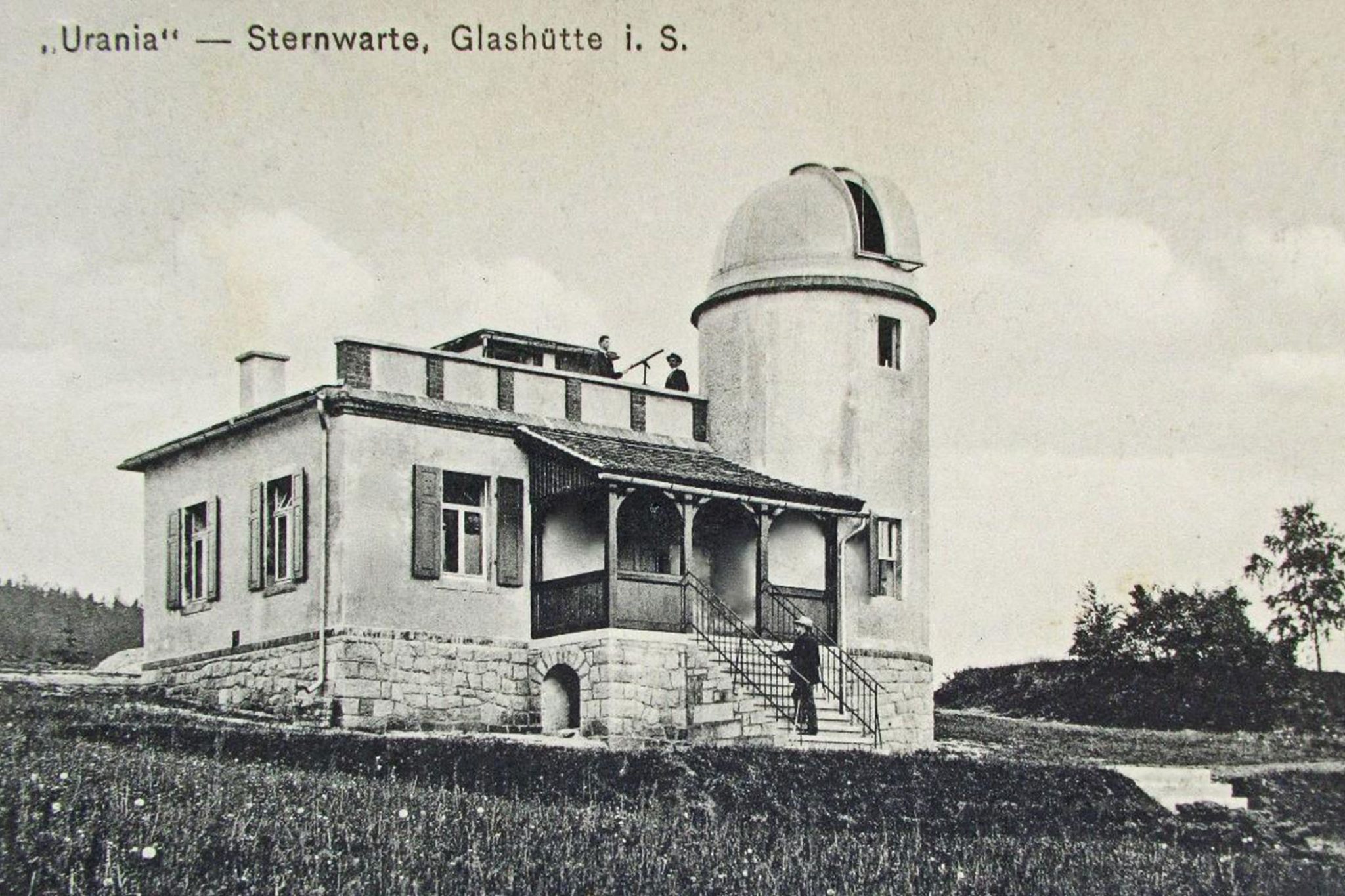
The Glashütte ‘Urania’ observatory in 1910
It was at this auspicious time that fate brought two men together: Otto Lange, grandson of Ferdinand A. Lange, the founder of the Saxon watch industry, and Herbert Wempe, owner of the Wempe Chronometerwerke (Chronometer factory) in Hamburg. They founded the Glashütte Observatory syndicate at the end of the 1930s. Their declared aim was to establish a research and training centre for young watchmakers in Glashütte as well as a regulation institute. However, the outbreak of the Second World War thwarted their plans. Regarded as companies vital to the war effort, Wempe and Lange were made to work together to develop a mass-produced, standardised, high-quality marine chronometer: the German Standard Chronometer. After the end of the war, the resulting division of Germany between the victorious powers into the democratic Federal Republic of Germany in the West and the communist dictatorship of the German Democratic Republic (GDR) in the East led to the watchmakers’ association in Glashütte being dissolved, and the observatory being declared national property. This was inescapable, as it was no longer permitted to run one’s own business under the new dictatorial leadership. During the GDR era, the observatory was mainly used as a residential building, and eventually fell into oblivion.
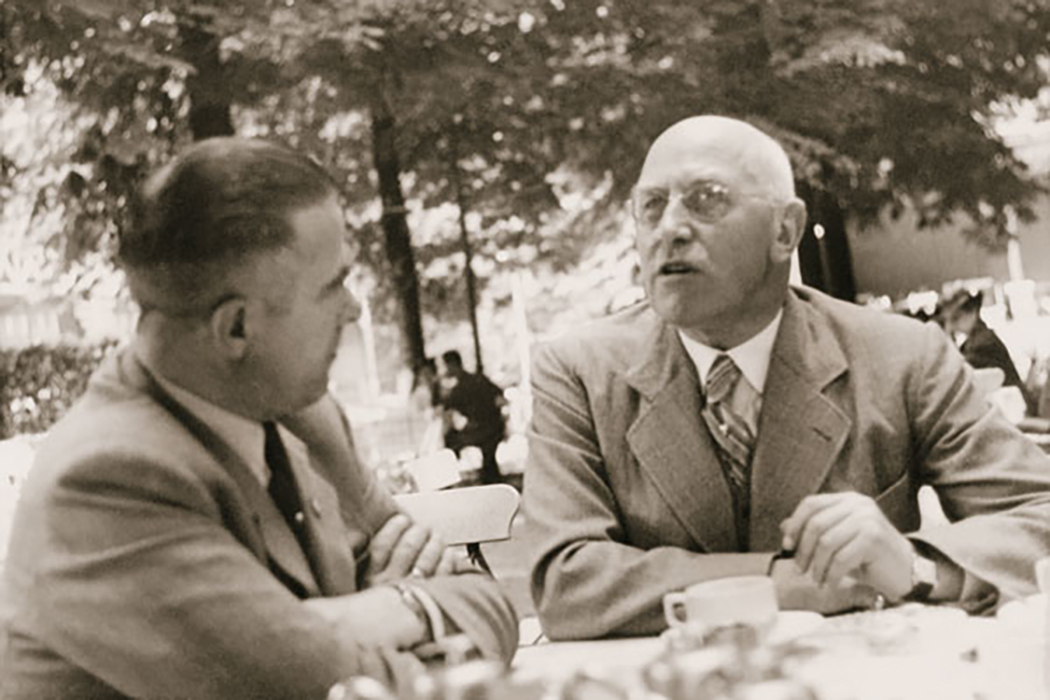
Otto Lange and Herbert Wempe
A haven of time
At least, it remained forgotten until 100 years after the first foundations had been laid, when, in the autumn of 2004, a young entrepreneur named Kim-Eva Wempe travelled to the watchmaking town of Glashütte to visit the derelict observatory. Exactly 65 years ago, in 1939, her grandfather had stood in this very spot, and laid out his great plans for the small observatory. This time around, his granddaughter had come with the aim of reviving an idea from the past: the idea of creating a ‘haven of time’, as her grandfather Herbert Wempe described it in his plans. On January 24, 2005, Kim-Eva Wempe acquired the 620 square-metre observatory site and invested around 1.5 million euros into renovating it. By 2006, the time had finally come, with Wempe not only rebuilding the observatory, but also creating its own production facility alongside the first chronometer testing centre in the country.
With this test centre, which is located in the observatory’s basement, Wempe has an important advantage over its biggest competitor, the COSC certification of the Swiss watch industry, as the ‘only official chronometer test centre in Germany’, according to ISO 3159, is even more precise. The main difference lies in the fact that the movements are tested when already housed in the watch cases, which better simulates everyday use.

The Wempe Observatory can be found at Herbert-Wempe-Platz 1
But, of course, it is not enough to simply certify the movements; Wempe decided to continue its story by producing its own movements. Incidentally, the retailer has a tradition of making marine watches: in 1938, watchmaker Herbert Wempe bought the aforementioned Chronometerwerke in Hamburg and changed the company name to ‘Chronometerwerke Wempe’. Wempe then launched eleven references in two collections for the first time in 2006: the Wempe Zeitmeister and Wempe Chronometerwerke. The latter incorporates Wempe’s in-house calibres, which are assembled and finished in Glashütte. When the third collection, the Iron Walker line, was added to the product portfolio in 2020, the reconstruction of the Wempe watch company was complete. New watches are added to the product range every year.
The Wempe Iron Walker Automatic Bicolor – A watch with character
Last year, 1,461 Iron Walker watches left the observatory, and Wempe plans to increase this number by five percent in 2024. The idea behind the Iron Walker watches seems obvious. Wempe has a flair for adding its own touch to designs that are familiar, almost ubiquitous. This concept is particularly evident in the Iron Walker Automatic Bicolor with a white or brown dial, launched in May 2023. As Wempe’s answer to the growing demand for steel watches with an integrated bracelet, it not only opens up the market for steel watches, but also a new colour theme in the Iron Walker collection.
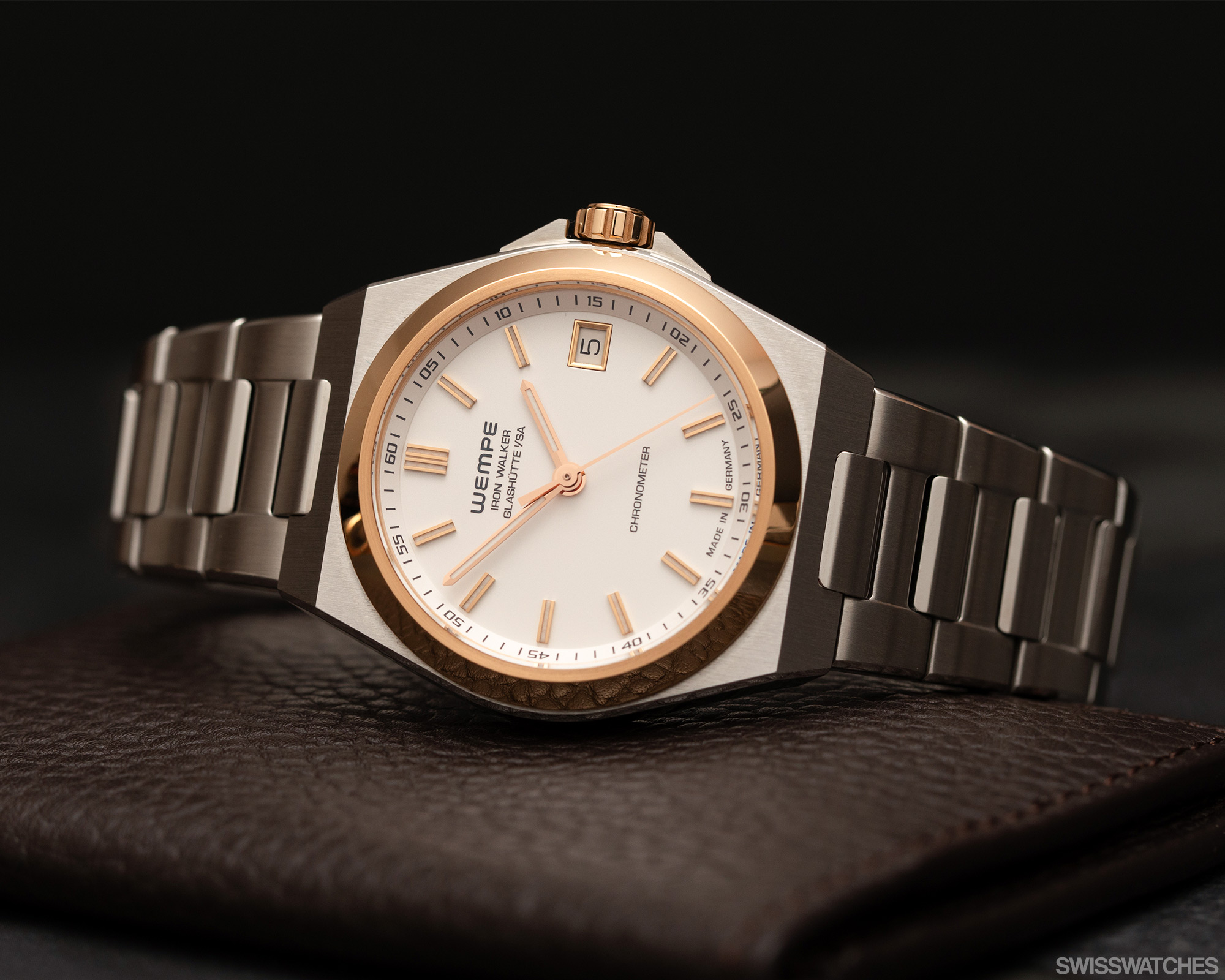
While bicolor watches are emblematic of the somewhat questionable fads of the 1970s and 1980s and remain less in demand than steel watches, Wempe presents an approach with the Iron Walker bicolor models that, thanks to the design of the Iron Walker collection, does not look old-fashioned, but fits seamlessly into the modern product line. With three hands and a date window, these watches may not offer any frills nor fancies – but the interplay between the steel case and bracelet and the rose-gold bezel, crown and indices shows how well cool steel and warm gold tones can harmonise when balanced properly.
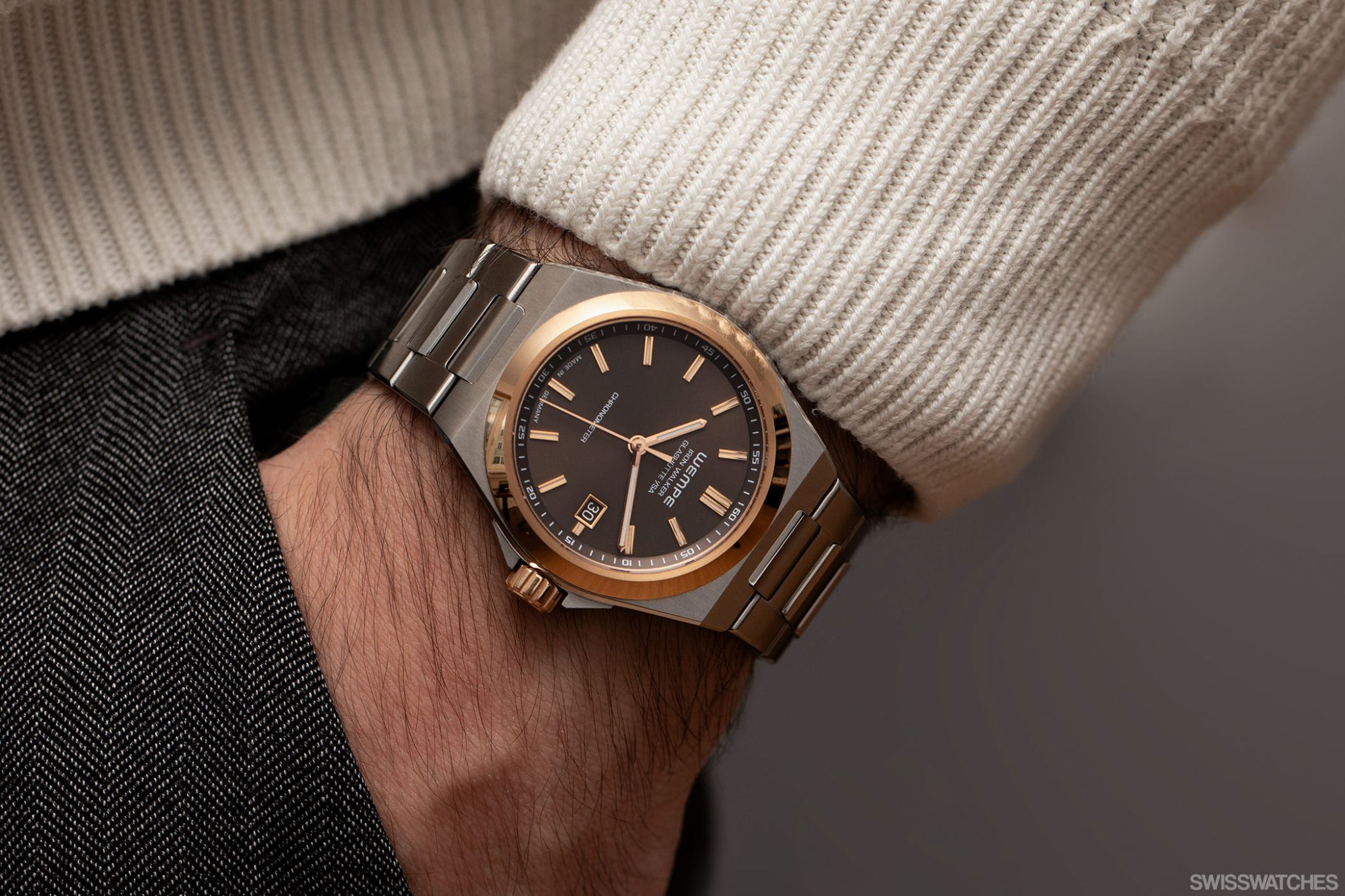
However, none of the Iron Walker Bicolor models have a manufacture movement, but rather the Sellita SW300-1a, which can nevertheless describe itself as German chronometer-tested in accordance with ISO 3159, thanks to its own fine adjustment. Although this is a purchased Swiss movement, the bicolor models also benefit from the history of the observatory and the only chronometer testing centre in Germany – it is precisely these stories and certificates that the industry thrives on today. The engraving of the observatory on the caseback and the Glashütte lettering on the dial also ensure that the wearer never forgets where their watch was made.
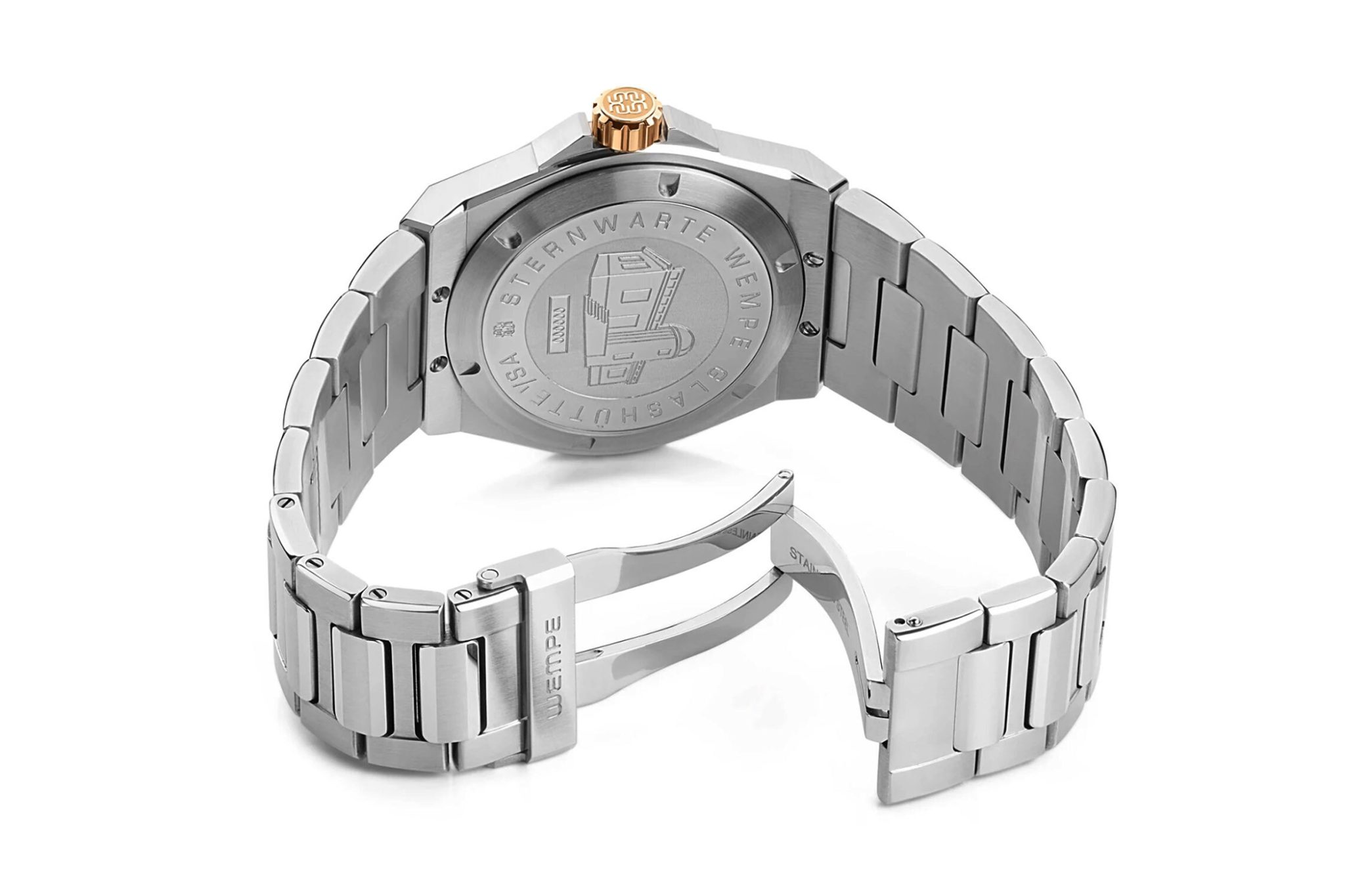
Wempe Iron Walker Automatic Bicolor – is it worth buying?
Overall, Wempe is offering a robust sports watch with the Iron Walker Automatic Bicolor models, each with a diameter of 36 or 40 mm, which is made into a real, characterful accessory thanks to the gold accents. The centrepiece of both models is the sunburst finish of the brown dial version, while the white dial offers an even stronger contrast to the gold accents, making the models versatile and accessible to both sexes. I was particularly impressed by the wearer comfort, which is a notable feature of the Iron Walker line, and the diameter of 40 mm, which is particularly successful even on narrower wrists. For a price of €4,675 and €4,995 for the brown and white dial versions with 36 and 40 mm respectively, you get a flawlessly crafted watch that stands out from the other watches in the Iron Walker product line in a special way.
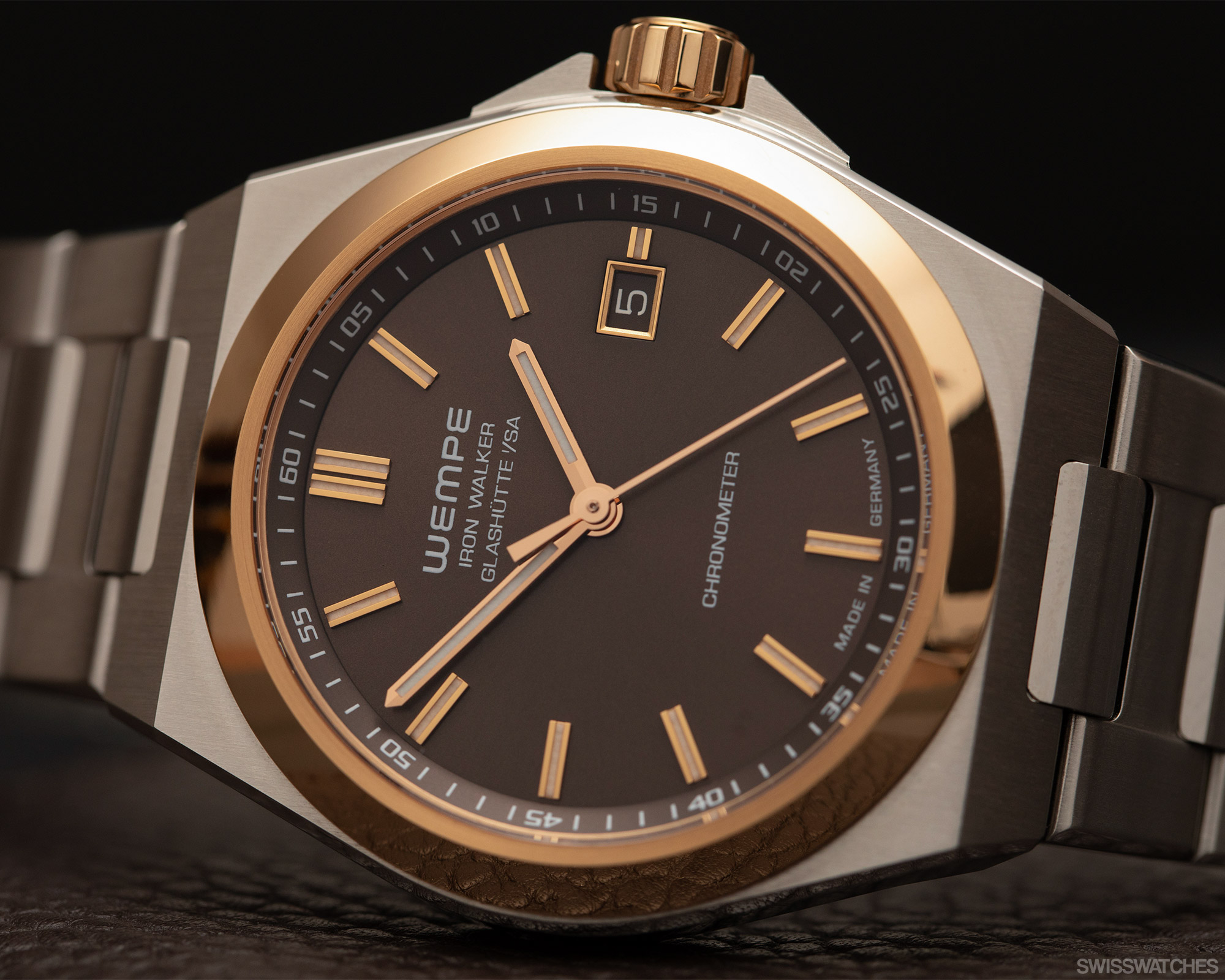
But there is another aspect that goes beyond the material, namely the history of watchmaking. The tale of Wempe’s production facility is one of political and social change, the past, and ultimately renewal in 2006. With Wempe’s Iron Walker, you are thus buying a watch that is not only of high-quality craftsmanship, but also a physical testimony to one historic company’s renewal – and that is what matters.
